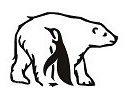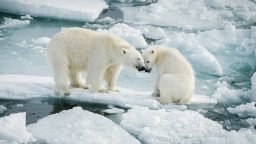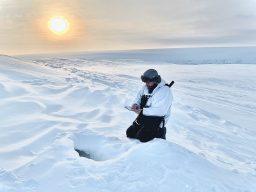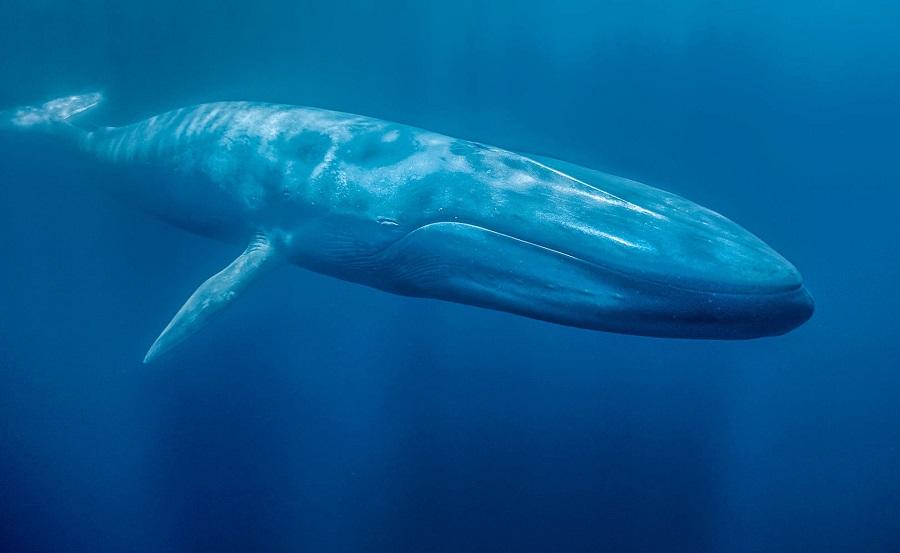
- The blue whale is the largest animal on Earth. The weight of an adult blue whale is 100-120 tons. The largest whale ever captured turned out to be a female caught near the Southern Scottish Islands. Its length from the fork of the caudal fin to the end of the snout was 33.27 m, and its weight was 176 tons.
It’s an animal, not a fish. A whale does not breathe with its gills, but with its lungs. And although the whale stays underwater for a long time, it needs to float outside to breathe in the air. That’s when you can see the fountain of water. Whales are mammals, they give birth to cubs and feed them milk, which is 10 times more nutritious than cow’s milk.
- The walrus is the thick–skinned animal of the Arctic. Their skin is very wrinkled and can reach 10 cm on the neck and shoulders. The fat layer is up to 15 cm. The weight of an adult animal can reach 2 tons. The tusks help to dig up clams and crabs on the bottom, and also to deftly climb slippery ice floes and rocky shores.
Young walruses have dark brown skin color and lighten and pale as they mature. Old males sometimes turn almost pink. Since the blood vessels of the skin constrict in cold water, walruses can turn almost white during bathing.
- The elephant seal is the largest pinniped. The male can reach a size of up to 6.5 meters, while the female is only 3.5 meters. The weight of the male is up to 3.5 tons, the female weighs up to 900 kg. Elephant seals also have one of the largest noses in the Arctic. During the mating season, it increases even more.
Why are they called elephants and not just giant seals? It’s all about the trunk – the big nose. Only males have a trunk and it attracts females, but not by size. They use it to make a high-pitched roar, which is so popular with elephant seals.
- The polar bear is the largest mammal predator weighing up to 800 kg or more. Three conditions are necessary for the existence of a polar bear: ice, open areas of the sea and a coastal strip. The sea provides him with food; the coastal strip is needed for the construction of dens.
Under normal conditions, polar bears travel on drifting ice floes, hunting ringed seals and sea hares (lakhtaka). A polar bear and Antarctica are incompatible things, since the polar bear’s habitat is only the Arctic.
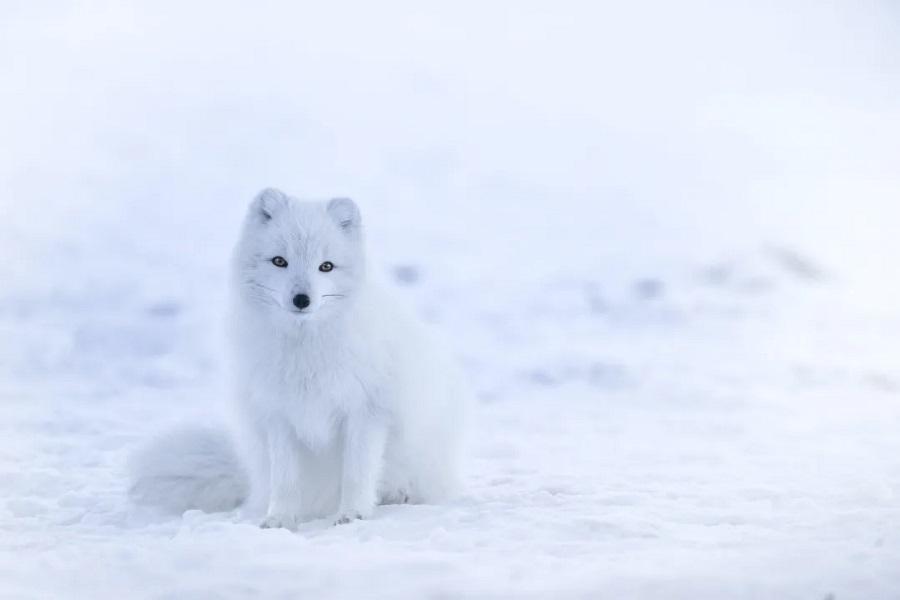
- The Arctic Fox is an unsurpassed master of disguise. It is also called the polar fox. It is a great specialist in survival, a very hardy omnivorous animal, capable of walking many kilometers in search of food. It often follows the polar bear, picking up the remains of its food.
He has many enemies — the same polar bear, but also a wolverine, a wolf. The incredibly thick white fur not only warms the Arctic fox even in the bitter cold, but also serves as a super mask, allowing it to practically merge with the snow and become invisible.
- The narwhal is the owner of the longest tooth. This marine mammal is characterized by having only 2 upper teeth. Of these, the left one develops in males into a tusk up to 2-3 m long and weighing up to 10 kg, while the right one usually does not erupt.
Narwhal tusks are highly durable and flexible; their ends can bend without breaking by at least 31 cm in any direction. The purpose of this narwhal tooth has not yet been precisely clarified, it is assumed that it is necessary during mating games to attract females.
- The Wolverine is an amazing beast that everyone has heard of, but few have seen it. It is the size of a large dog, but outwardly resembles both a brown bear and a badger. His paws are interestingly arranged — with very large feet. But on such feet you can quickly move through loose snow and not fall through.
The wolverine’s character is harsh — the animal can attack an enemy larger than itself. Another feature is an enviable appetite. In different languages, the wolverine is nicknamed “the glutton” because of its ability to overeat. This habit, of course, helps out in hungry and cold times.
- The ringed seal is one of the smallest seals in the Arctic. It got its name for the light circles on the dark skin. These mammals are widespread throughout the Arctic coast. They live apart, only sometimes forming small groups.
Baby seals – squirrels – are born in a white fur coat, which darkens after two to three months. Squirrels spend all this time of their early childhood in ice caves that protect them from predators and the cold, and feed on thick mother’s milk.
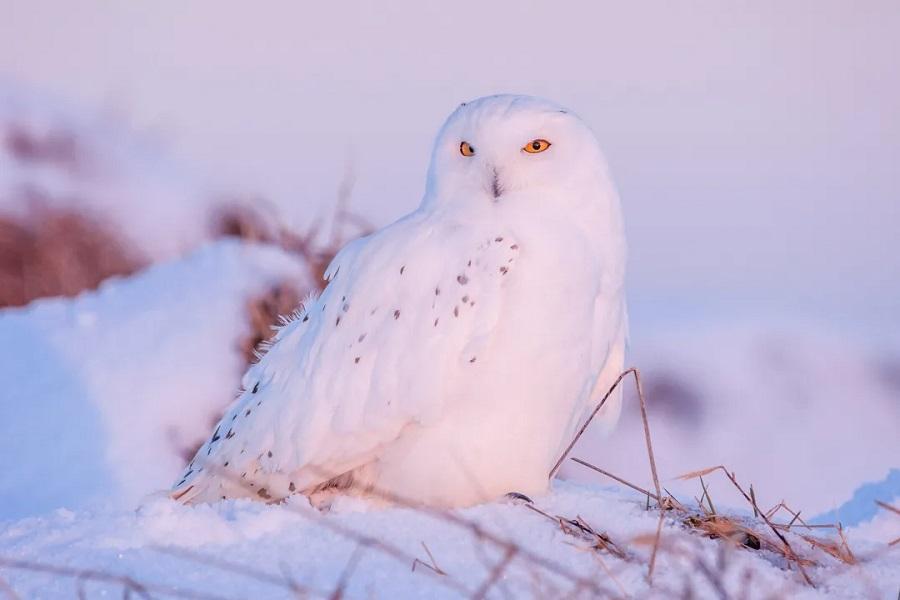
- The polar owl is the largest bird of prey in the tundra. The body length of a male can reach 55-65 cm, and the weight is 2-2.5 kg, of a female, respectively, 70 cm and 3 kg. The wingspan averages 1.5 m. The snow-white plumage helps her to remain invisible against the background of winter landscapes.
She has very sharp eyesight and fine hearing — an owl can “dive” right into the snow to a depth of 10-20 cm to get a gawking lemming out of there. In a year, one owl eats more than 1,600 lemmings. It also catches hares, small predators (ermine), birds (white partridges, geese, ducks), and does not neglect fish and carrion.
- The Arctic tern is the furthest migrant, making long–distance flights from the Arctic to the Antarctic (up to 30 thousand kilometers), where they spend the winter. This is the longest flight among birds and means that the Arctic tern sees more sunlight each year than any other animal.
But polar terns hatch their chicks in the Arctic. These are very brave birds: gathering in flocks, they can fight back against predators, attacking together and wielding their beaks. And a person can also be attacked if they decide that he poses a threat.
- The reindeer. They were one of the first domesticated animals. According to various sources, this happened 5-7 thousand years ago. Several drawings of the White Mountains, which are 5-6 thousand years old, depicted reindeer in sleds, which indicates that these were already domestic animals.
In recent years, archaeologists have found 15 thousand-year-old reindeer harness parts in the Sayan Mountains. Unlike dogs, which are already different from their ancestor, the wolf, deer look similar to their ancestors.
- The tundra swan is the most monogamous bird in the Arctic. Every spring, he migrates to the Arctic to build a nest and lay eggs. They form pairs for life at the age of 2 to 4 years.
Mating games take place on land. The male walks in front of the female with his neck outstretched, sometimes raising his wings. At the same time, he makes a peculiar popping sound and screams loudly. Then the couple flies to a new place, and the ritual repeats again.
